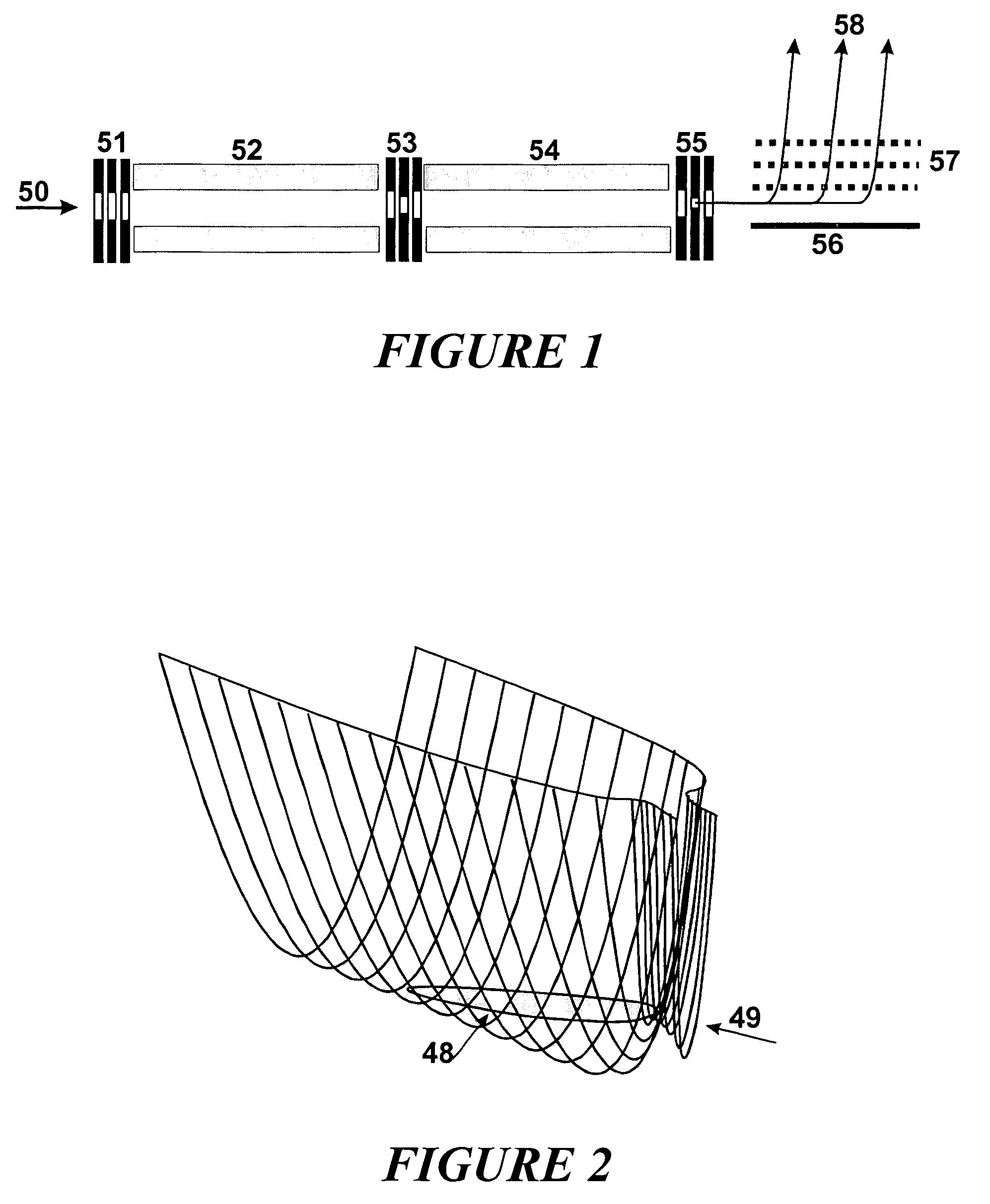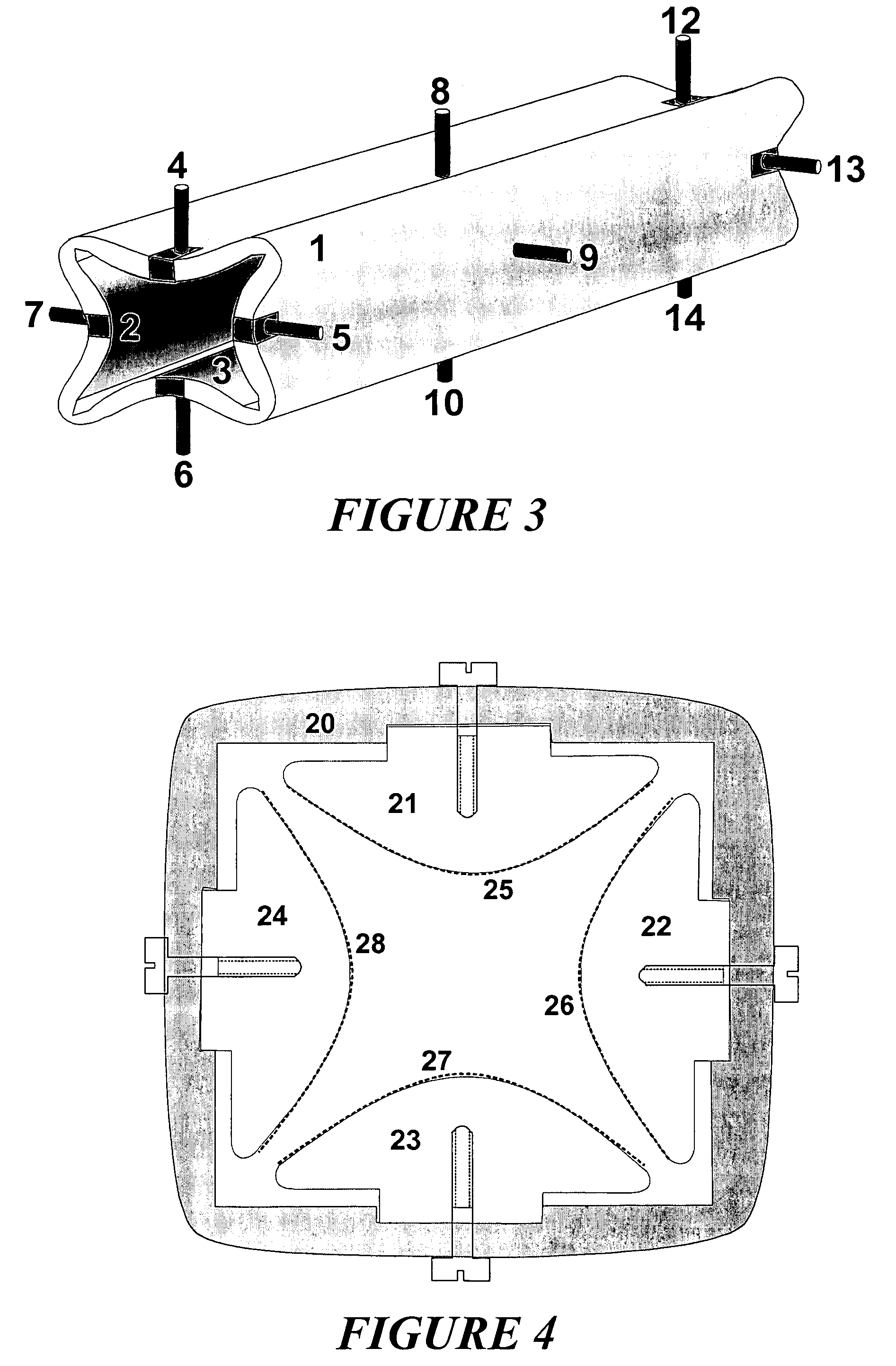Ion-optical phase volume compression
a technology of phase volume compression and ion-optical, which is applied in the direction of electron/ion optical arrangement, particle separator tube details, separation process, etc., can solve the problems of inability to reduce the phase volume of ions by such a reduction, heavy gases cannot be used, and no hyperbole system is used at all. to achieve the effect of facilitating production
- Summary
- Abstract
- Description
- Claims
- Application Information
AI Technical Summary
Benefits of technology
Problems solved by technology
Method used
Image
Examples
Embodiment Construction
[0054]A preferred embodiment of the method for producing a fine ion beam with ions displaying homogeneous energies consists in using a hyperbolic quadrupole system which facilitates the generation of an axial potential gradient, roughly the quadrupole system (54) in FIG. 1, in conjunction with a diaphragm system (55) at the ejection end of the quadrupole system. The ions can be introduced through an injection diaphragm system (53) into the interior of the quadrupole system, for example. A glass quadrupole system (1) shown in FIG. 3 can be used as the quadrupole system, for instance. For this, the quadrupole system is filled with collision gas at a pressure of between 10−2 and 10+2 Pascal, causing the ions to thermalize more or less rapidly, i.e. they give up their kinetic energy to the collision gas keeping only thermal residual energies. The restoring forces of the pseudopotential cause the ions having lost their kinetic energy, to collect in the axis of the quadrupole system.
[0055...
PUM
 Login to View More
Login to View More Abstract
Description
Claims
Application Information
 Login to View More
Login to View More - R&D
- Intellectual Property
- Life Sciences
- Materials
- Tech Scout
- Unparalleled Data Quality
- Higher Quality Content
- 60% Fewer Hallucinations
Browse by: Latest US Patents, China's latest patents, Technical Efficacy Thesaurus, Application Domain, Technology Topic, Popular Technical Reports.
© 2025 PatSnap. All rights reserved.Legal|Privacy policy|Modern Slavery Act Transparency Statement|Sitemap|About US| Contact US: help@patsnap.com



